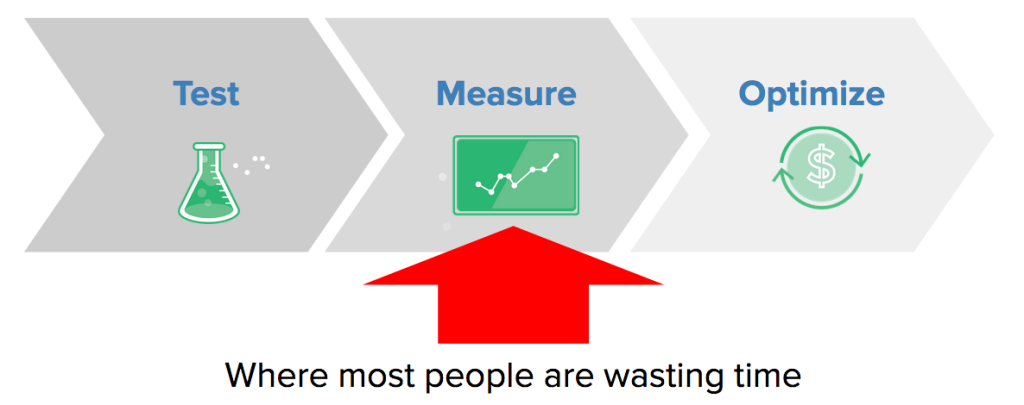The PPC world is changing fast. Just a few years ago, remarketing wasn’t common, and mobile was barely on the radar (iPhones didn’t even exist!). Since then, we’ve seen a rapid evolution of PPC, and major changes to both existing and new platforms. These developments bring new opportunities to tap into growth.
Yesterday, we teamed up with Elite SEM to explore the biggest opportunities emerging in PPC, why you should consider giving them a try, and how to start experimenting with them today.
If you missed it, you can download the slide deck or watch the full event here:
Experiment #1: Modify for Mobile

We hear about the importance of mobile all the time, and for years now, people have been speculating about whether it’s finally the “Year of Mobile.”
The introduction of enhanced campaigns means that now, bids and budgets are combined across device types. If you want to optimize on mobile for search, you need to use a specific modifier to lower or raise the mobile budget. If you’re not watching your data carefully, it’s easy to overspend.
#PPC mistakes to avoid: 1) Don't blanket bid, 2) be aware of mobile overspend. @MarcWeisinger #PPCevolves pic.twitter.com/y8DUE70EAR
— Eden Tsai (@East_of_Eden) October 23, 2014
Every couple of weeks, download and analyze your data to see how your experimentation is going. Stay away from blanket bidding for desktop and mobile! You want to be monitoring your performance directionally, and then using modifiers to optimize based on that trend.
Experiment #2: Exhaust your search ROI

Search is most people’s bread-and-butter, and thanks to new developments with extensions and modifiers, there’s a whole new world of opportunities in this familiar channel.
- Extensions are things like site links, location, phone numbers, and seller ratings. They add an additional layer of interactivity and legitimacy to an ad.
- Modifiers allow you to bid more aggressively in areas where conversion rates are higher. For example, if you see that ads are cheaper and converting higher mid-week, you can use modifiers to only run ads during that time.
The big thing to remember here is that modifiers are multiplicative. This makes it dangerously easy to overspend on ads. Google makes it easy to test several modifiers at once, but it’s in your best interest to resist this. Start small, test, and add modifiers with care.
Watching #PPCevolves. Remember modifiers can be layered on top of each other! Test test test
— Mason Hooten (@MasonHooten) October 23, 2014
Experiment #3: Supercharging your ads and feed

Feed-based campaigns like Google Shopping continue to grow and are becoming a bigger component of the digital marketing mix. Elite SEM shared that their ecommerce clients spent 93% more on shopping campaigns in the first half of 2014 as compared to 2013. (Stay tuned: more data on this topic will be released next month.)
Product feeds – essential to show up in Google Shopping. Is yours optimized? #PPCevolves
— Anthony Saladino (@ASaladinoSEM) October 23, 2014
Google is focusing search results on shopping, which is great in that it allows advertisers to see product-specific data. Keep in mind that you shouldn’t bid the same for all products, you need to target smaller segments of product categories to bid more aggressively, and then separate budgets based on performance. Details are crucial here as even small errors can hinder your targeting.
Experiment #4: YouTube TrueView Ads
If YouTube were considered a search engine, it would be the second largest. Its TrueView ads are pre-roll videos that target users before they view video content. Clicks are cheap, between 10-15 cents, and don’t cost anything if a user chooses not to watch the entire ad. Try experimenting with pairing remarketing audiences and shopping cart abandoners with YouTube TrueView campaigns.
Experiment #5: Gmail sponsored promotions
Gmail sponsored promotions allow you to target based on location, gender, age, interests, mailing lists, and domains. They are a particularly great way to target similar or complementary domains when thinking about your target customers. To track your experiments with this platform, you can set up analytics tracking and remarketing from splash page opens.
Experiment #6: Dynamic Remarketing Audiences
In the past, it was only possible to do remarketing based on information in the destination URL, or manually-created lists. Dynamic remarketing changes this by triggering remarketing based on bigger, better, scalable lists. Experiment with remarketing based on the business specific variables that matter most.
PPC is a Speed Game
Just five years ago, SEM was a lot simpler. All you had to do was pick a term and bid, and then optimize your creative. As long as you had a product people liked, it was fairly easy.
These days, search is a competitive market. Since we all have access to the same set of tools, the only way to rise to the top is to be smarter and faster than your competition. Data is key, and it’s all about how quickly you can test a campaign, analyze your results, and optimize. The faster you move through this cycle, the more successful you’ll be.
Download, Analyze, Adjust, Repeat. The life of a search analyst. #PPCevolves
— Amanda Johnson (@amandajohnson_7) October 23, 2014
How To Get Faster
In the test-measure-optimize cycle, most people are wasting tremendous amounts of time at the “measure” phase. If you want to up your speed game, stop doing manual data pulls and analysis in Excel. In fact, just stop using Excel altogether. It takes too long. Instead, use a platform – any platform – that allows you to analyze results automatically.

Once you have a good system set up, you can experiment faster, kill what doesn’t work, invest more in what’s amazing, and tweak what’s marginal.
Next Steps
If you want to learn more about the topics we covered in this webinar, here are a few additional resources:
- Device Type Trends – Mobile.
- How I Built the Ultimate SaaS PPC Dashboard, and How You Can Too
- Shopping Whitepapers (feeds and Google Shopping history) – Coming Soon
Of course, we also recommend scrolling back up to the top of the page and watching the webinar you missed – you’ll definitely learn something.
Thanks to everyone who joined us, and congratulations to April Mallord, our iPad winner!
NO WAY!!! I won an iPad from @RJMetrics & @EliteSEM! As well as learned invaluable PPC insights. #PPCevolves So exciting!!! :))
— April Rae Mallord (@AprilRaeMallord) October 23, 2014

